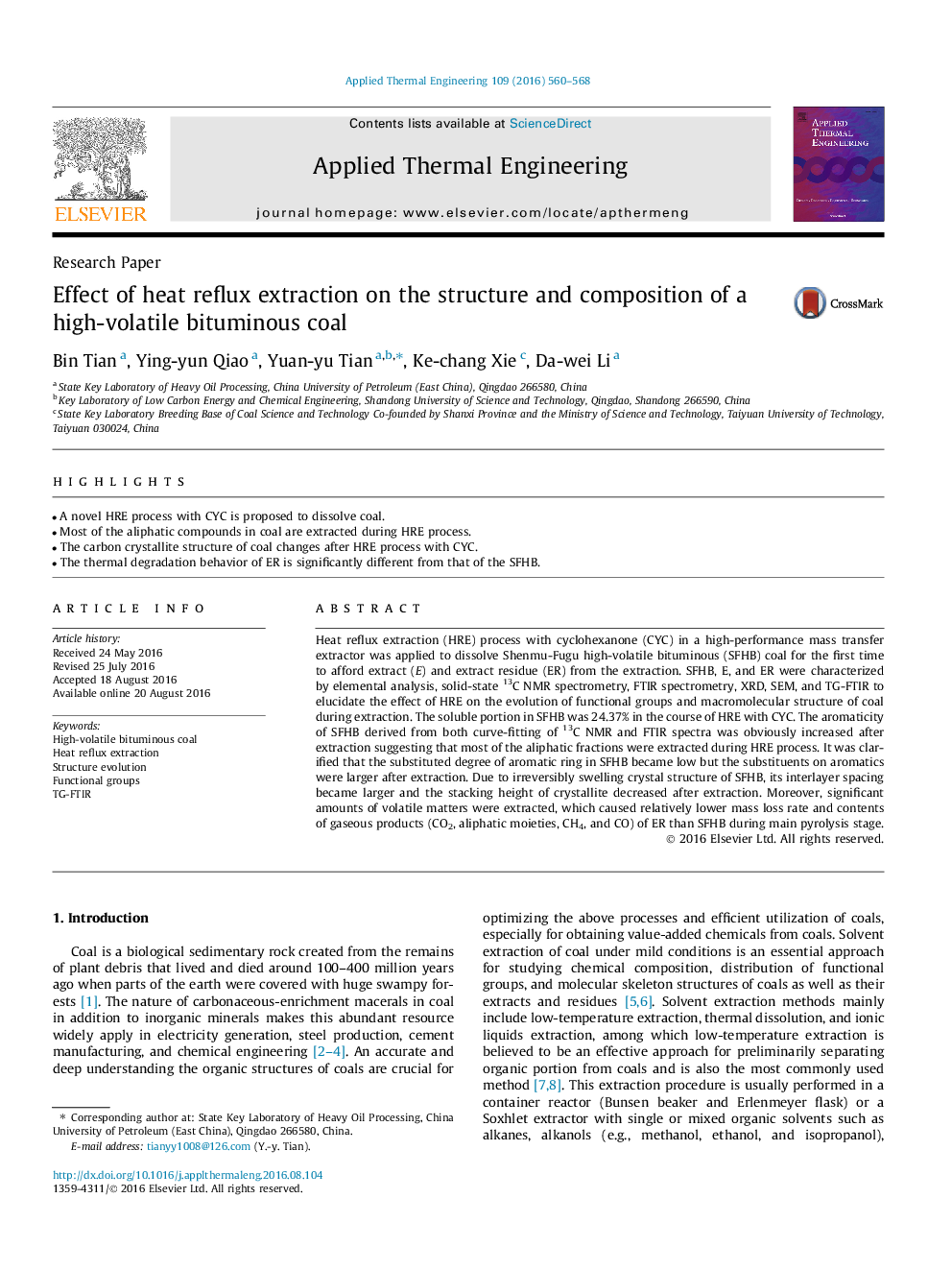| Article ID | Journal | Published Year | Pages | File Type |
|---|---|---|---|---|
| 6481182 | Applied Thermal Engineering | 2016 | 9 Pages |
â¢A novel HRE process with CYC is proposed to dissolve coal.â¢Most of the aliphatic compounds in coal are extracted during HRE process.â¢The carbon crystallite structure of coal changes after HRE process with CYC.â¢The thermal degradation behavior of ER is significantly different from that of the SFHB.
Heat reflux extraction (HRE) process with cyclohexanone (CYC) in a high-performance mass transfer extractor was applied to dissolve Shenmu-Fugu high-volatile bituminous (SFHB) coal for the first time to afford extract (E) and extract residue (ER) from the extraction. SFHB, E, and ER were characterized by elemental analysis, solid-state 13C NMR spectrometry, FTIR spectrometry, XRD, SEM, and TG-FTIR to elucidate the effect of HRE on the evolution of functional groups and macromolecular structure of coal during extraction. The soluble portion in SFHB was 24.37% in the course of HRE with CYC. The aromaticity of SFHB derived from both curve-fitting of 13C NMR and FTIR spectra was obviously increased after extraction suggesting that most of the aliphatic fractions were extracted during HRE process. It was clarified that the substituted degree of aromatic ring in SFHB became low but the substituents on aromatics were larger after extraction. Due to irreversibly swelling crystal structure of SFHB, its interlayer spacing became larger and the stacking height of crystallite decreased after extraction. Moreover, significant amounts of volatile matters were extracted, which caused relatively lower mass loss rate and contents of gaseous products (CO2, aliphatic moieties, CH4, and CO) of ER than SFHB during main pyrolysis stage.
